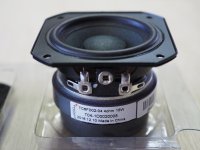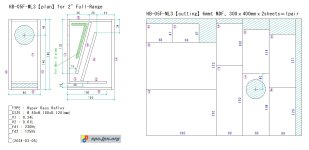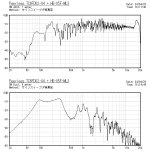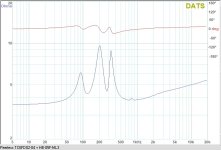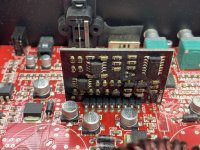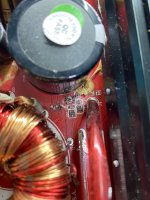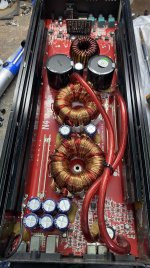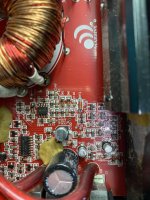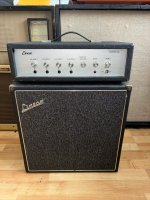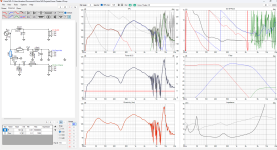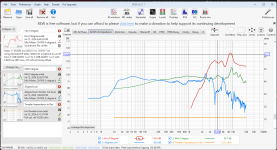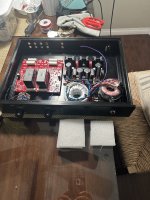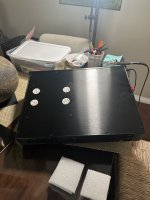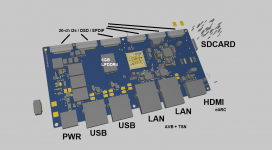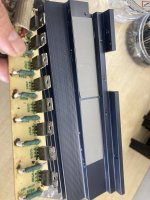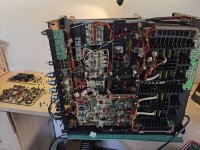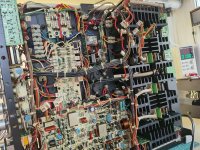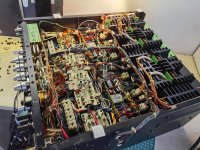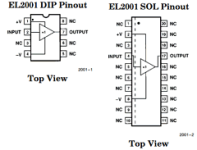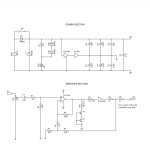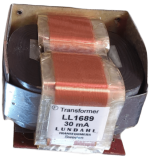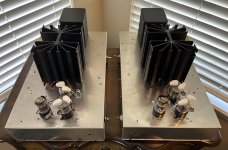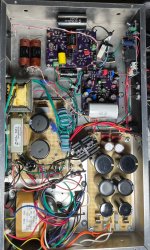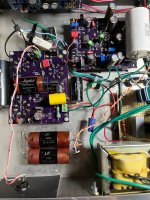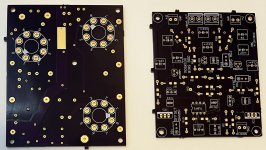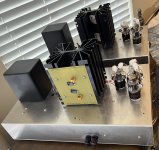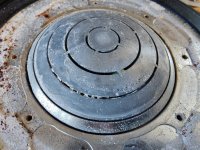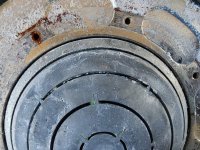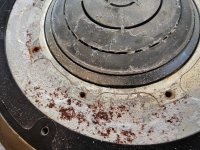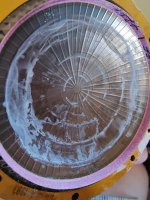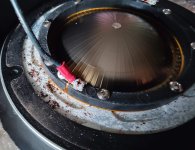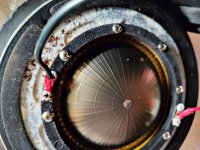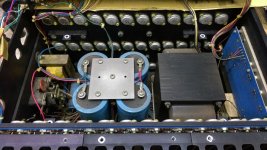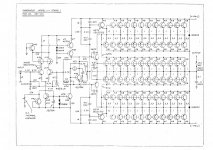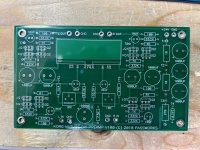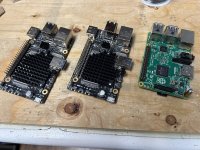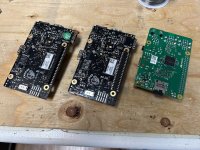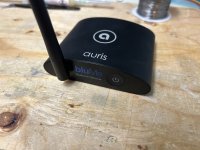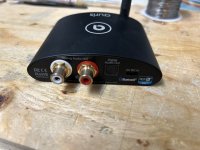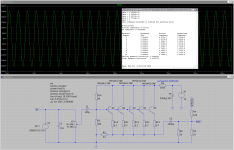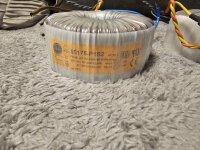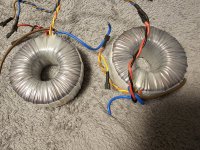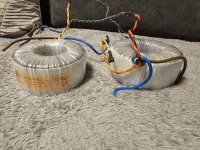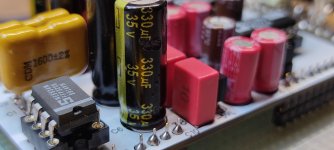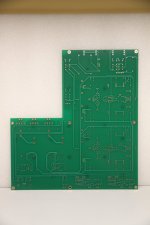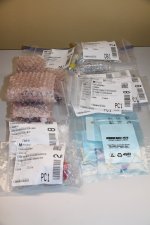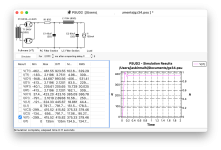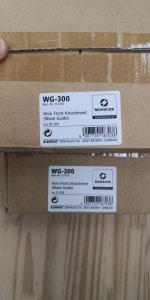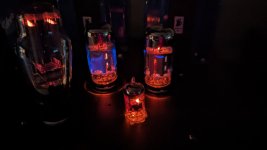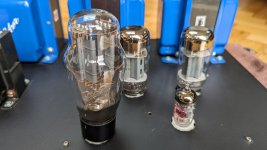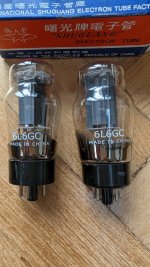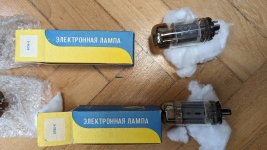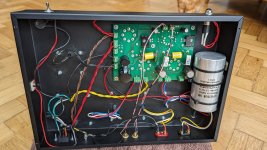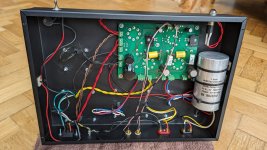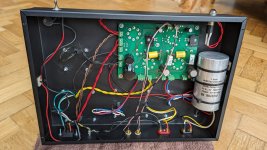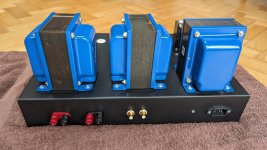I have an USB DAC (a Topping E30 V.1 actually) that outputs 2 Volt. I have 80 ohm headphones (Beyerdynamics DT770 pro actually).
The adagium of an old Dutch technical oriented audio magazine 'Audio & Techniek' was 'less is more'. More components in an audio circuit will not benefit the sound quality. Food for discussion I am sure but I believe it to a certain extent. So the thought popped in my head why I would need a voltage amplifier stage in a headphone amplifier when the DAC delivers enough voltage? Why not try to make a frontend for the USB DAC to plug the headphones in, a current buffer? I did and it turned out to be a fun experiment using the cheapest components I could find. It is suited for headphones with an impedance of 32 to about 80 ohms.
The circuit is a 136 mA biased, class A current buffer that consists of 5 paralleled TO-92 transistors per channel. Perhaps there is some benefit in using paralled transistors, I do not know, you tell me. I have a lot of them, ordered from beyond for a low price.
The frequency range runs to 3 Mhz before it begins to drop off. If necessary it can be limited to 80 kHz by using a 15 nF capacitor to ground right after the input capacitor. In my case that was not needed, but see my comment further on.
According to LTSpice it produces nice harmonics, especially the 2nd one stands out. The distortion is not too low, about 0.03% in 32 ohm and 0.01% in 80 ohm, what is to be expected for a simple circuit like this. If it sounds right I will very soon forget that number, the former is what matters to me most.
The buffer is named 'Amai-3000' for a reason. 'Amai' is an expression of surprise in Belgium. In this case concerning the sound quality, the temperature, and hopefully it lasts until the year 3000 (well, the enclosure does, could not resist some humour).
So the transistors and 43 ohm resistors become hot. According to the freely adapted and well known official Nelson Pass Temperature Scale where you place your finger on the component and measure the time how long you can stand the heat without cursing:
Blimey hot: 10 seconds = 45 deg C.
Crikey hot: 5 seconds = 50 deg C.
Bloody hot: 2 seconds = 55 deg C.
Amai hot: < 1 second > 60 deg C.
, the transistors are Bloody hot, but the power dissipation is within range. The 43 ohm resistors are between Amai and Bloody hot but they also should be able to cope.
As a first (endurance) test I left the circuit on for more than 10 hours to see if the cheap components would last; of course they did otherwise you would not be able to read this
🙂 I will see on the long term...
Reading many threads (not only on this forum) and looking at all these expensive oversized fancy pancy amplifiers in the shops you would believe that the bigger the enclosure, the better the sound
😉 Why not use an enclosure of 5 x 6.5 x 11.5 cm (
https://www.gainta.com/en/g111.html) I thought. That may be to the other extreme, using an undersized box like that, but I like puzzles. To let the heat escape and to avoid drilling more holes I lifted the cover of the case a bit by using 4 extra bolts thereby creating an opening around the case.
Btw, before I used WD40 as a lubricant while drilling holes in the aluminium, but a trick that I read elsewhere that I wanted to test is to use hand cream. That worked even better than WD40 and it smells nice too but opinions may vary. There is nothing like the smell of WD40 in the morning, that's why afterwards I treated the aluminium with WD40 to protect it, not to protect it but for the smell.
Oh, and another thing: after finishing it there was a slight hum that varied with the volume. At maximum volume the hum dissappeared. This may very well have to do with oscillation in combination with the power supply, as another post suggested. Replacing the power supply helped to solve that, although I also suspect that limiting the bandwidth by using a 15 nF capacitor to ground right after the input capacitor might as well be a solution.
Maybe the circuit can be improved. I used BJTs instead of FETs because FETs hate me and therefor I hate them and I avoid them like the plague. I had to use 100uF electrolytic capacitors at the input (amai!). However, even considering that and the expectation bias I am aware of, it sounds spacious, natural and especially dynamic. At first I had the tendancy to increase the volume too much but soon learned not to do that not to let my ears fold into my head. Other amps may not sound compressed, but it is my impression this buffer sounds very dynamic. Could that be the result of using transistors in parallel?
To conclude; this very simple circuit might make a base for further experimenting, to leave it as it is or to ignore completely. Thank you for reading this far.
 Moderation edit:
Moderation edit: